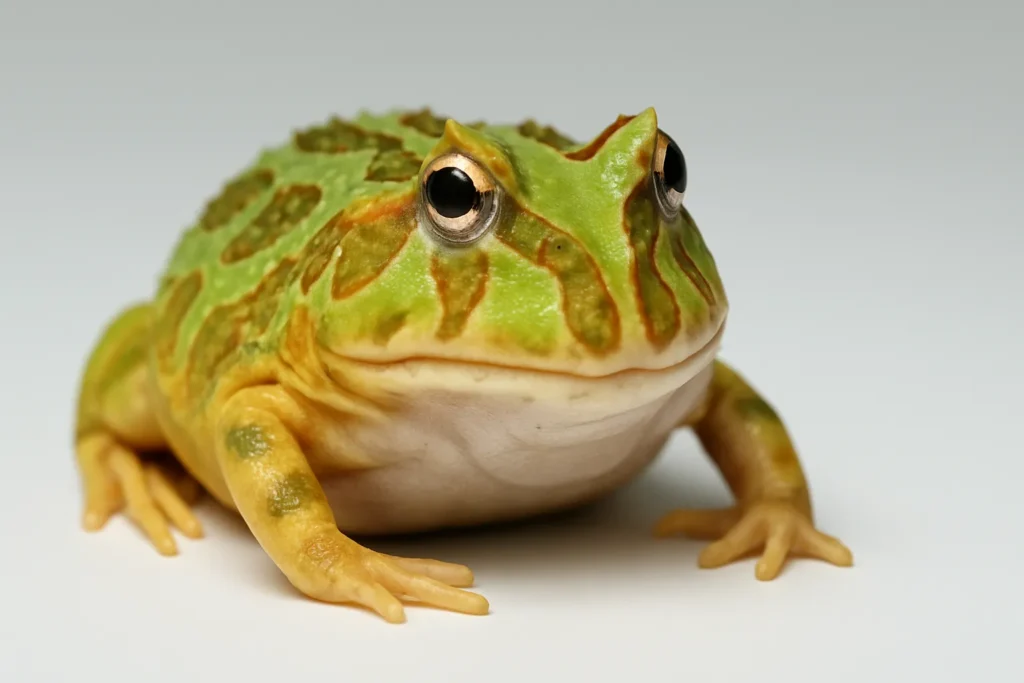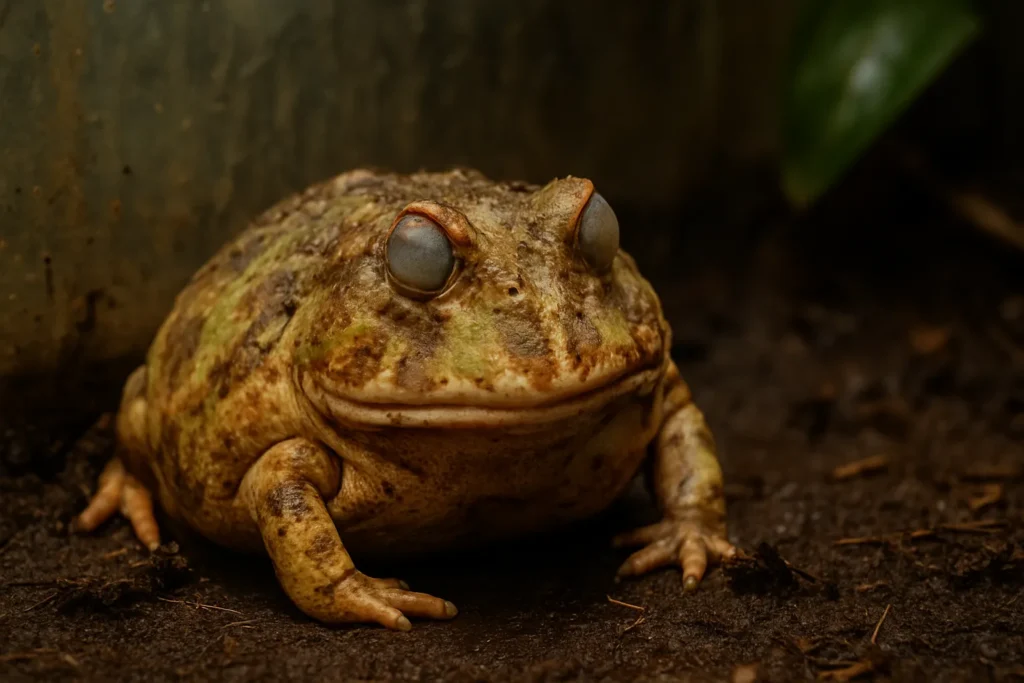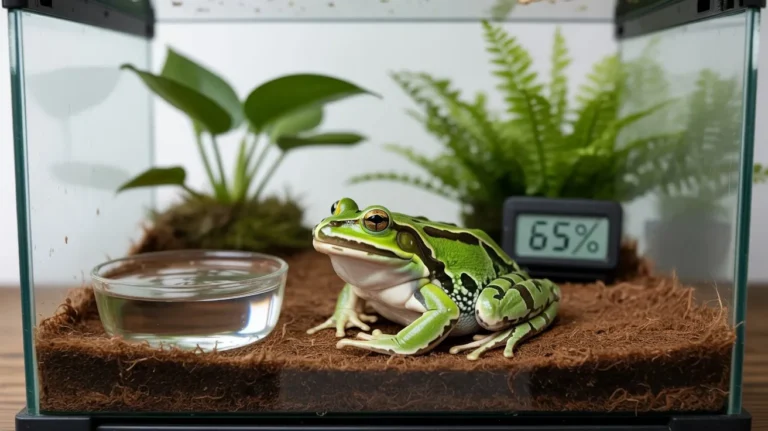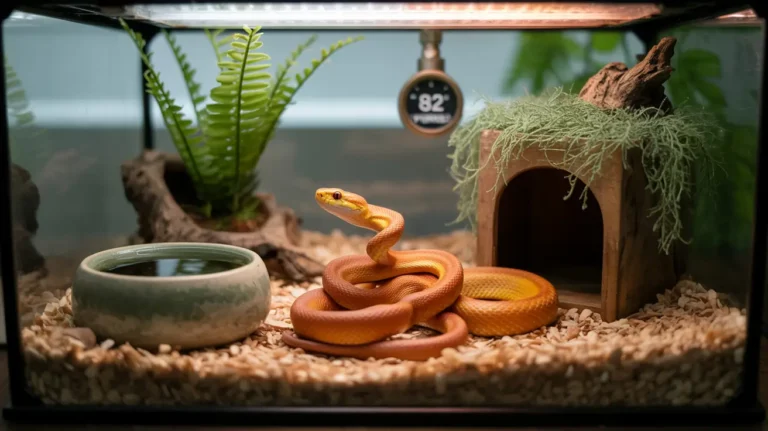Common Health Issues in Pacman Frogs and How to Prevent Them
Pacman frogs are hardy amphibians when cared for properly, but even the toughest pets can develop health problems if their needs aren’t met. From skin infections to dietary imbalances, many issues in Pacman frogs are preventable with the right knowledge and setup.
In this expert guide — based on over a decade of experience — we’ll explore the most common health issues in Pacman frogs, how to recognize early symptoms, and most importantly, how to prevent them with proper care.
Why Understanding Frog Health is Crucial
Unlike mammals, frogs often hide signs of illness until it’s advanced. That’s why prevention and early observation are key. Most Pacman frog health issues are directly related to poor enclosure conditions, improper diet, or neglect in hygiene.
1. Metabolic Bone Disease (MBD)

Cause: Calcium deficiency and lack of vitamin D3
Symptoms:
- Soft or deformed jaw
- Crooked spine or limbs
- Lethargy or difficulty moving
- Loss of appetite
Prevention:
- Dust feeder insects with calcium + D3 supplements 2–3 times per week
- Provide a balanced diet (gut-loaded insects, occasional variety)
- For setups with no natural sunlight, use low-level UVB lighting (2.0–5.0)
Note: MBD is irreversible if not caught early — prevention is vital.
2. Impaction
Cause: Ingesting substrate or undigestible prey (like large mealworms)
Symptoms:
- Refusal to eat
- Bloated abdomen
- No waste for several days
- Lethargy
Prevention:
- Use safe substrate (e.g., coconut fiber, organic topsoil)
- Avoid gravel, sand, or bark chips
- Don’t feed prey larger than the width between the frog’s eyes
- Soak in lukewarm, dechlorinated water if mild symptoms occur
3. Bacterial and Fungal Infections

Cause: Poor hygiene, overly damp enclosures, dirty water dishes
Symptoms:
- Discolored or peeling skin
- Open sores or red patches
- Swollen limbs or cloudy eyes
- Foul odor or slime-like appearance
Prevention:
- Maintain humidity between 60–80% but avoid overly wet substrate
- Clean the enclosure weekly, spot clean daily
- Change water dishes daily
- Quarantine new frogs before introducing to main enclosures
4. Dehydration
Cause: Low humidity or dry substrate
Symptoms:
- Dry, wrinkled skin
- Lethargy
- Sunken eyes
- Refusal to eat
Prevention:
- Mist enclosure daily
- Provide a shallow water dish (changed daily)
- Monitor humidity with a digital hygrometer
- Use sphagnum moss in hides to maintain moisture
5. Obesity
Cause: Overfeeding high-fat foods like waxworms or pinkie mice
Symptoms:
- Swollen body shape
- Folds of skin around the limbs
- Lethargy
Prevention:
- Follow a structured feeding schedule (adults: 2–3 times per week)
- Limit treats like waxworms to once every 1–2 weeks
- Use a variety of low-fat insects (crickets, earthworms, roaches)
6. Vitamin A Deficiency (Hypovitaminosis A)
Cause: Poor diet lacking in vitamin A
Symptoms:
- Swollen eyelids or cloudy eyes
- Difficulty shedding skin
- Loss of appetite
- Respiratory issues in severe cases
Prevention:
- Gut-load insects with carotenoid-rich foods (like leafy greens or carrots)
- Use a multivitamin supplement weekly
- Occasionally offer commercial frog pellets fortified with vitamins
7. Shedding Problems (Dysecdysis)
Cause: Low humidity, dehydration, or vitamin deficiencies
Symptoms:
- Retained skin on toes or body
- Lethargy during shedding
- Loss of appetite
Prevention:
- Boost humidity to 80% during shedding
- Add a moist hide with damp sphagnum moss
- Soak the frog in shallow lukewarm water if needed
8. Parasites
Cause: Wild-caught prey, unclean tank conditions, or infected new frogs
Symptoms:
- Weight loss despite normal appetite
- Abnormal droppings
- Lethargy or bloating
Prevention:
- Never feed wild-caught insects
- Quarantine new frogs for 30 days
- Have droppings tested yearly by an exotics vet
9. Red-Leg Syndrome
Cause: A bacterial infection, usually from dirty environments
Symptoms:
- Red discoloration on the underside of legs and belly
- Weakness or inability to move
- Lethargy and sudden weight loss
Prevention:
- Maintain strict hygiene in enclosure
- Use reptile-safe disinfectants
- Isolate any sick frog immediately
Red-leg is a medical emergency. If suspected, consult a vet experienced in amphibians right away.
Quick Tips to Keep Your Pacman Frog Healthy
- Always use dechlorinated or spring water
- Keep temperature and humidity within optimal range – Detailed guide Perfect Pacman Frog Enclosure
- Handle frogs only when necessary — their skin absorbs everything
- Watch for sudden changes in appetite, skin, or behavior
- Keep a record of feeding, shedding, and behavior patterns – Detailed Pacman Frogs | Nutritious Feeding Guide
FAQs
Final Thoughts
Understanding the common health issues in Pacman frogs helps you prevent them before they start. With the right enclosure setup, proper feeding, and good hygiene, most of these problems are entirely avoidable.
Owning a Pacman frog isn’t just about feeding it — it’s about creating an environment where it can live safely and comfortably. Prevention, observation, and quick action are the keys to keeping your frog healthy for years to come.






